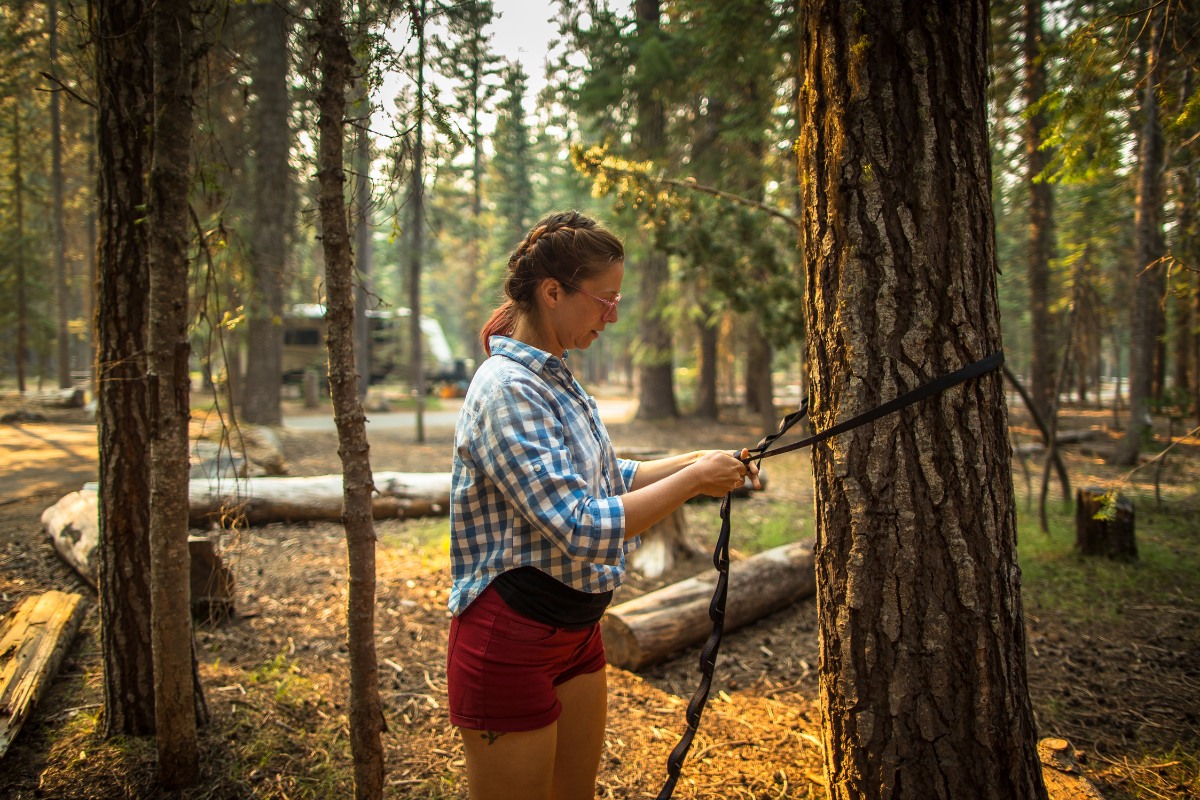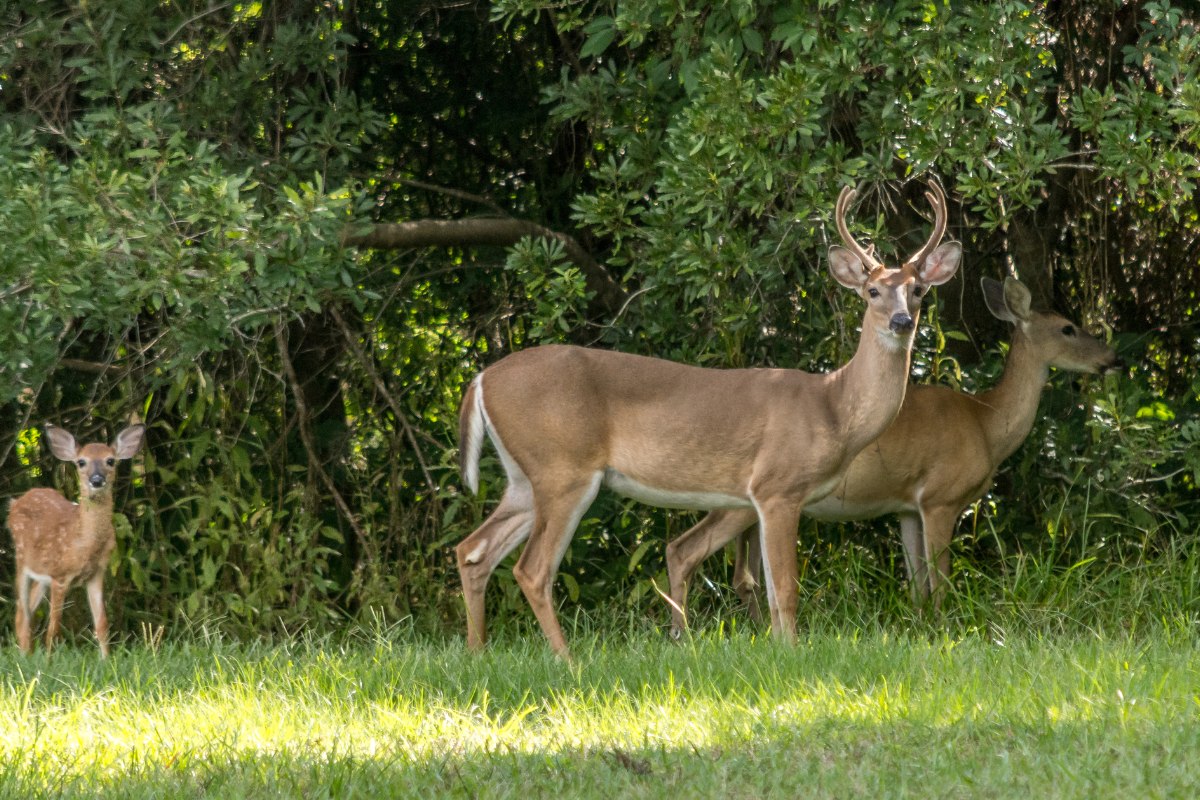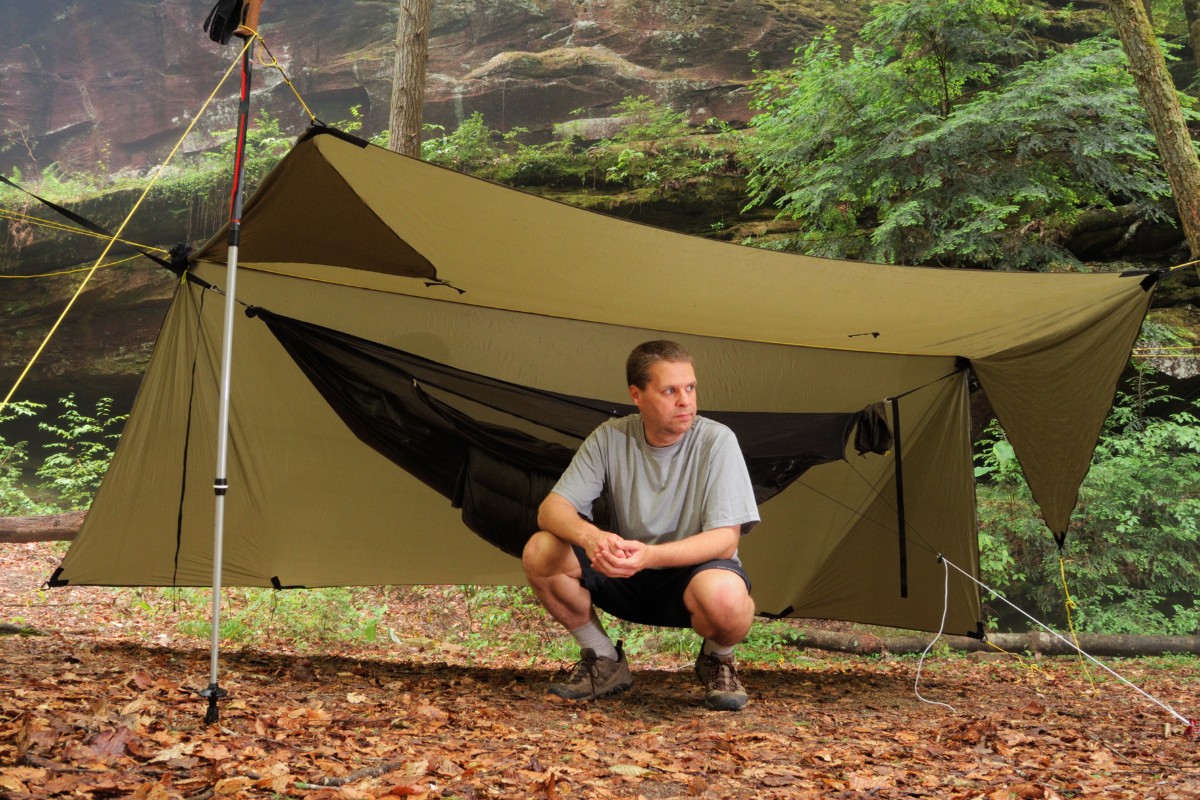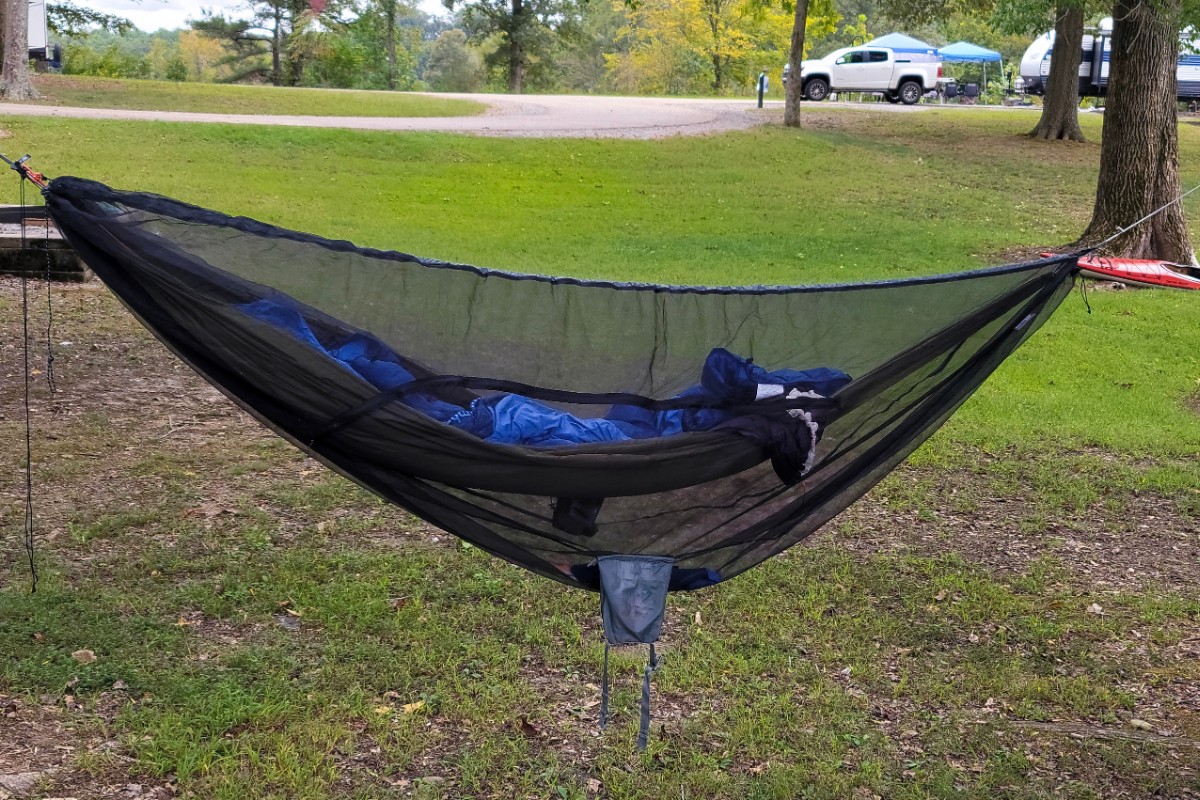A hammock liberates you to sleep absolutely anywhere. As long as you can find two anchor points, like trees or posts, you can attach your hammock at both ends via the hammock straps and give yourself a comfortable place to sleep or just to relax.
But of course, in order to use your hammock, you first need to be able to attach it to said posts or trees. This means tying a knot and getting the angle just right. It’s not a difficult process, but there are definitely tricks to getting it just right, and these can help lead to a much comfier sleep (and less damage to the environment too!).
So with that in mind, let’s take a look at how to use hammock tree straps to create the perfect, comfortable place to sleep.
Types of Hammock Straps
The first thing to recognize is that different hammocks will come with different straps, and this can change the way you use them and the way that you attach them. Depending on the nature of your hammock and intended use, you may find that some hammock straps are better suited than others – so this is a consideration to have in mind when making a purchase.
For example, if you intend on using your hammock while camping or hiking, then there’s a good chance you’ll be tying your hammock straps to trees most of the time. This, in turn, means you’ll be placing a lot of weight on the trees and potentially cutting into them with the sharp edge of the rope.
These straps use a kind of webbing that is designed to be safe for the bark and spread the pressure out over a larger surface area. At the same time, though, it’s also important to make sure you use the right tying method, so as not to minimize the damage caused.
Oh, and of course, the way you tie your hammock straps also needs to ensure that the hammock will stay up. That bit is rather important as well!
Of course, the nature of the strap will also dictate how far the gap between the two trees should be for the optimum hanging angle, and it will dictate the strength of the hammock too. Your hammock is only as strong as the two weakest points, so if it can’t bear the weight, then it might break even when the hammock itself is made from a strong, ripstop construction.
The Process
So with that said, how do you actually go about securing your hammock in place?
Your Knot
To begin with, you need to think about how the hammock itself is attached to the straps. In other words, you need to secure the straps onto the hammock before you can secure them to the trees!
This is not always the case – sometimes the hammock and the straps will be built as one piece, meaning that there’s no need to attach them separately. Other times, you will need to tie the straps on manually.
To do the latter, you need to choose a knot that will attach without any risk of coming undone and that will let you untie it easily afterward.
One of the best types of knots for your hammock tree straps is the figure-eight knot. This goes as follows:
- Take the end of the rope and grab it a little way down, making sure there’s enough at the end for what comes next.
- Create a large loop with the remainder of the end of the rope and then grip it in the same hand to make a noose. We’re going to imagine that this is a face.
- Now take the end of the rope and wrap it twice around the base – as though you’re strangling the head.
- Now poke the remaining end through the loop as though you’re stabbing the face in the eye.
- Pull tight.
- You now have your figure-eight loop! This should be strong enough not to come undone, while being easy to untie when you need to.
The Trees
Now you need to find your two anchor points. These are likely to be two trees, and the ideal distance apart will be 13 to 16 feet.
If the distance is too great, though, you can potentially extend your hammock straps using a length of rope – just note that you then need to be especially careful with the way this rope will affect the tree – so ideally the rope attaches to the hammock and the hammock straps to the tree!
One thing to look for when measuring the distance between the two trees is how the hammock hangs. If the trees are too far apart, then there won’t be much slack in the hammock at all, and it will look straight and taut across the gap.
This will reduce the maximum load considerably, while also making the hammock less comfortable. When testing the distance, there should be a slight dip in the hammock that roughly resembles a banana. Meanwhile, the attachments should come away from the trees at about 30 degrees, as this will give them the most strength.
It can be useful to use something to measure the height of your attachments too if you’re the precise type – but as long as they’re roughly the same height, then you should be fine.
And actually, if you’re someone who finds they get a bad back sleeping in a hammock, one thing to try is putting the leg-end of the hammock lower than the head end, which will provide more support for your back and may be comfier for some.
Of course, the thickness of the tree is also important to bear in mind! Though most hammock tree straps should come with excess material to make sure you can easily fit around even a wide circumference.
How to Tie Hammock Straps
Now comes the part where you tie the hammock straps themselves. The way you do this will again depend on the type of straps you have. The classic nylon straps, for instance, are 2’’ thick with a loop at either end and a metal ring going through one loop. You’ll also have a separate S-hook.
Thankfully, learning how to tie hammock straps is fairly simple. You just need to tie the strap around the tree, looping one end through the other until it is taut and there’s no excess strap left over. Now connect the S-hook to the circular ring and the hammock to the S-hook… you should be good to go!
Now perform the exact same thing on the other end, and your hammock is attached!
Note that some hammocks won’t come with the S-hooks or the loops, and thus they will need to be attached manually at both ends. This still shouldn’t be a problem, however, and you should find that it’s still possible to hang hammock straps on most trees.
Simply loop the nylon strap around the tree and loop one end through the other if there is lots of excess strap. Now loop the rope through the end of the hammock and then tie a knot to secure the other ends of the rope to the hammock straps using the figure-eight we described earlier. You can also use a rock climbing carabiner to help make the attachment.
How to Choose Hammock Straps
The best hammock straps will be those that protect trees, so search specifically for hammock tree straps and look for webbing that will help to spread the pressure over the bark.
Check how resilient the hammock straps are and how much weight they can bear, and also make sure to read up on how long they are.
If you plan on hanging your hammock in a hammock stand, however, then your aim will be somewhat different, and you’ll need a different type of hammock strap.
Often the straps in this case will come along with the hammock stand, or there will be a separate attachment that you can use. Be sure to read our reviews of hammock stands too for more information in this area. You can even get portable hammock stands to bring with you on your trips!
Finally, remember that you can also kit yourself out with rope, S-hooks, and other extra hardware to create more options for hanging your hammocks and for keeping them aloft.
Once you have the art of tying hammock straps and hanging your hammocks down, you’ll be able to turn any two trees or posts into a great place to hang your hammocks. Now you can stop carrying heavy tents around and enjoy chilling with a cool drink while watching an incredible view.








